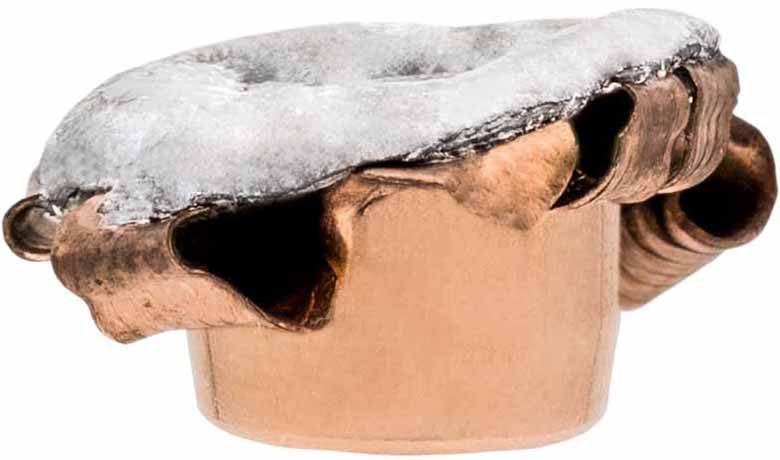Tested: Hornady’s new Bore Driver FTX Redefines Muzzleloader Bullet Performance
By: Mike Dickerson

Hornady, which has long been an innovator in new bullets and cartridges, is not your average ammunition maker. In just the past 25 years, the company has created the 17 HMR, which rewrote the rules of rimfire performance, and collaborated with Ruger in creating the 204 Ruger, 300, and 338 Ruger Compact Magnums, 375 Ruger and 416 Ruger. Hornady then created the wildly successful 6.5 mm Creedmoor and followed that up with the 6 mm Creedmoor and the 300 PRC.
Now Hornady is at it again with a new bullet, called Bore Driver FTX, that redefines performance for muzzleloader projectiles. Hornady’s goal was to deliver maximum accuracy and lethality in a bullet that’s also easy and fast to load. Based on the results of testing the bullet in my 50 Cal. Thompson Center Triumph muzzleloader Hornady has succeeded admirably.

Bore Driver FTX bullets are initially offered in 50-caliber with a weight of 290-grains. These bullets do not use a sabot. Instead, they employ a polymer gas-seal base with a post that fits into the bottom of the bullet. Upon ignition, the post expands to firmly engage the inside of the bullet while short, centering petals grip the boattail bottom of the bullet as the polymer base engages the rifling. This expanding post also causes the bullet itself to expand a bit, helping the bullet engage the rifling as it spins down the bore. Thus, bullets are better stabilized in flight, and that can contribute to better accuracy.

The bullet was designed for controlled expansion at muzzleloader velocities. The jacket at the nose of the bullet is thinner than it is at the base, and the bullet has Hornady’s FlexTip to reliably initiate expansion, even at relatively low velocities, while making the bullet more aerodynamic. It has a copper jacket versus copper plating that works in combination with an interlock ring, which locks the jacket to the core. This ensures deep penetration as well as expansion, and all of these elements combine to create a genuine, high-performance muzzleloader bullet. For convenience, the bullets come in tubes that can be used as speed loaders and are easily carried afield.
In testing, I found that the bullets were easy to load, even after multiple shots. It took a little force to get them started down the muzzle, as it does with most any muzzleloader projectile, but after that, it didn’t take much pressure to push bullets down the bore and seat them with consistent pressure atop the powder charge.

For testing at the range, I loaded my old TC Triumph with 100 grains of Pyrodex in the form of two 50-grain pellets and clocked the bullets at an average muzzle velocity of 1415 fps. Adding another 50-grain pellet, for a max load of 150 grains, pushed velocity to 1575 fps. That translates into about 1,290 ft. lbs. of muzzle energy with the 100-grain charge and about 1,600 ft. lbs. of energy with the 150-grain charge. That may not sound terribly impressive, but remember the bullet is making a 50-caliber hole upon entry, and it’s designed to both expand and penetrate at slower muzzleloader velocities.
Accuracy results were impressive, considering all the variables that can impact muzzleloader accuracy. Shooting three, three-shot groups at 100 yards produced average groups measuring just 1.09 inches and a best group of 0.70 inches. I’m happy anytime I can get inch-and-a-half groups from any muzzleloader, so accuracy results with the Bore Driver FTX bullets came as a pleasant surprise. These bullets will definitely see some use in my TC Triumph in the future. See them at your dealer, or for more information, contact Hornady Manufacturing; Tel.: (800) 338-3220; Web: www.hornady.com.






















